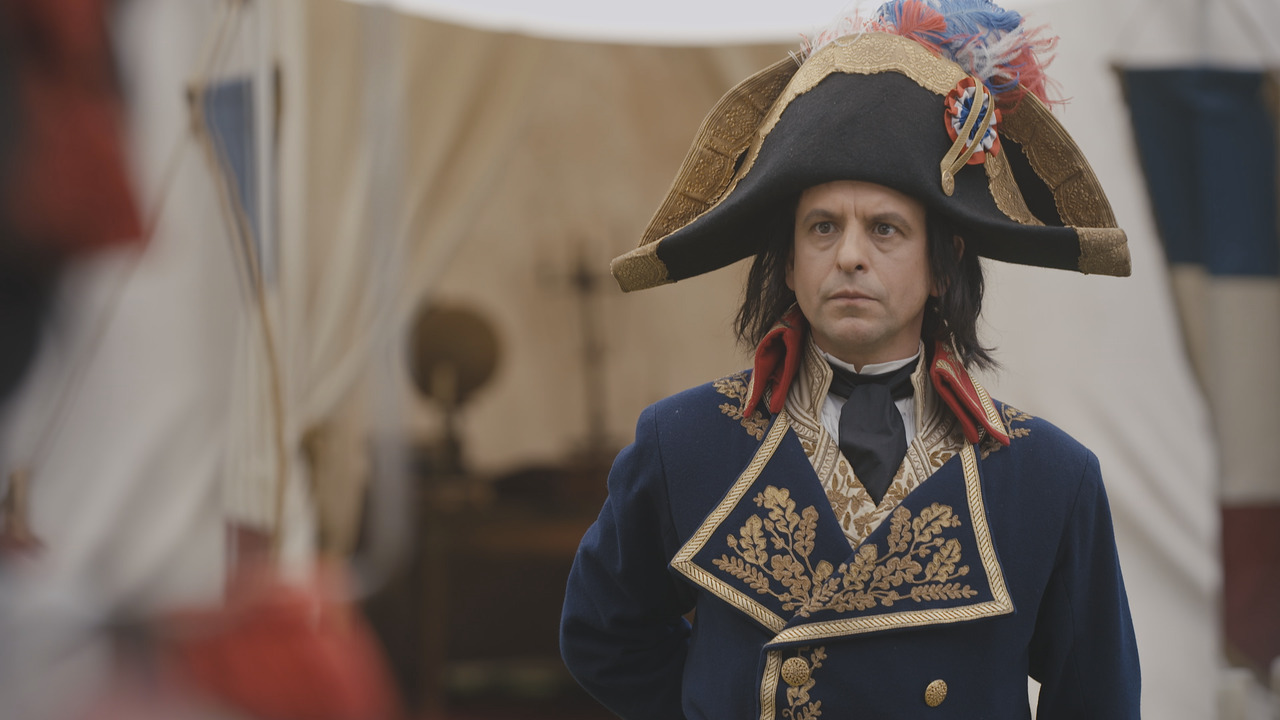 Image courtesy of France channel, “The Real War of Thrones: Napoleon,” (2024)
Image courtesy of France channel, “The Real War of Thrones: Napoleon,” (2024)
When most people think of Napoleon Bonaparte, they picture grand Parisian monuments: the Arc de Triomphe, Les Invalides, or the column in Place Vendôme. But outside the capital, far from the tourist circuits, Napoleon’s memory lingers in quieter, quirkier ways. Across rural France, small towns have become guardians of unexpected relics — fragments of a man whose presence once loomed over Europe.
Relics in the Provinces
In the Auvergne town of Lapalisse, a faded tavern sign still proclaims that Napoleon once slept there. In Corsica, his birthplace of Ajaccio is peppered with family homes and chapels tied to his childhood, but even in villages that never saw him, locals tell stories of the emperor passing through, dining at an inn, or leaving behind a trinket.
Many towns proudly display artifacts in modest local museums: a uniform button, a sabre said to have been carried by one of his soldiers, even locks of hair claimed to be his. The authenticity of these items is sometimes debatable, but their value lies less in historical precision than in the pride they inspire.
The Cult of the Roadside Statue
One of the most visible forms of local Napoleonic memory is the roadside statue. Small towns erect busts of Napoleon in squares or parks, often commissioned in the 19th century when the Second Empire under Napoleon III revived the family legacy. Some are grand and martial, others oddly domestic, portraying him with a gentle gaze more suited to a village benefactor than a conqueror.
These statues serve as touchstones of identity. For towns that sent men to Napoleon’s armies, the monuments honor both the emperor and the thousands of ordinary soldiers who followed him into battle.
A Popular, Not Just National, Hero
What makes Napoleon’s memory distinctive is its popular dimension. He’s not just preserved in state-sponsored sites but in the anecdotes of families, the names of cafés, and the local legends that blur fact and myth. In some rural areas, schoolchildren still recite stories of “the Little Corporal,” the humble soldier who rose to power, rather than the autocrat who crowned himself emperor.
Even towns that Napoleon never visited sometimes claim him as their own, weaving him into folklore. It’s as if every corner of France wants a fragment of his aura.
Why He Endures Locally
Part of Napoleon’s endurance in small-town memory comes from his paradoxical image. He was both a ruler of Europe and a man of humble origins. For many communities, especially in poorer regions, he symbolizes ambition, meritocracy, and national pride. The physical relics — statues, inns, family keepsakes — act as anchors to a story that still feels personal, even two centuries on.
Memory Beyond Monuments
To walk through a provincial French town and stumble upon a Napoleon relic is to be reminded that history doesn’t just live in capitals or textbooks. It survives in half-forgotten plaques, local lore, and objects cherished in village museums.
Napoleon may have reshaped Europe, but in France’s small towns, he endures in miniature: a roadside bust, a story told at a café, a sign declaring “Napoleon slept here.” Together, they form a mosaic of memory — less about empire and conquest, more about belonging and the way communities claim their place in history.